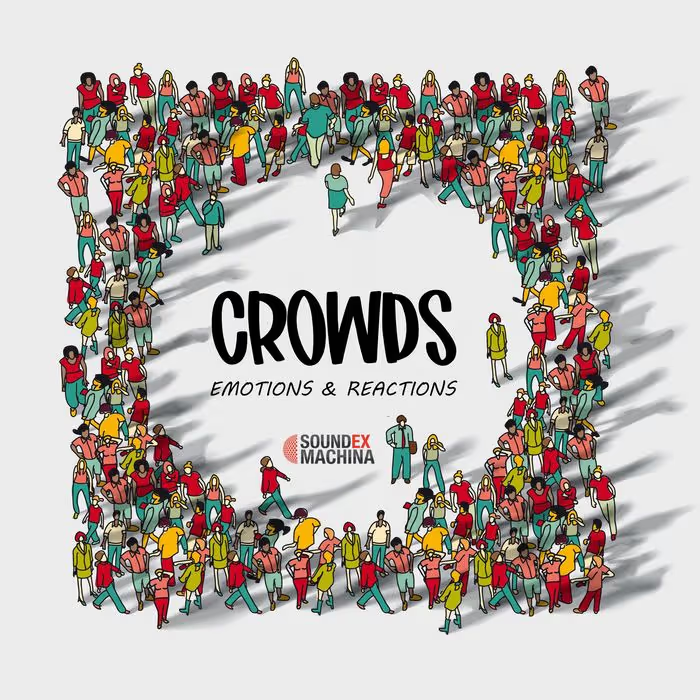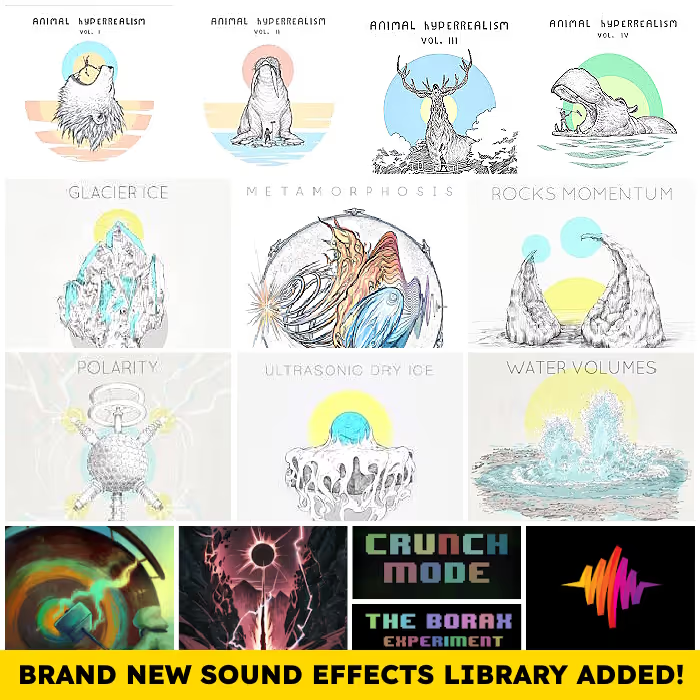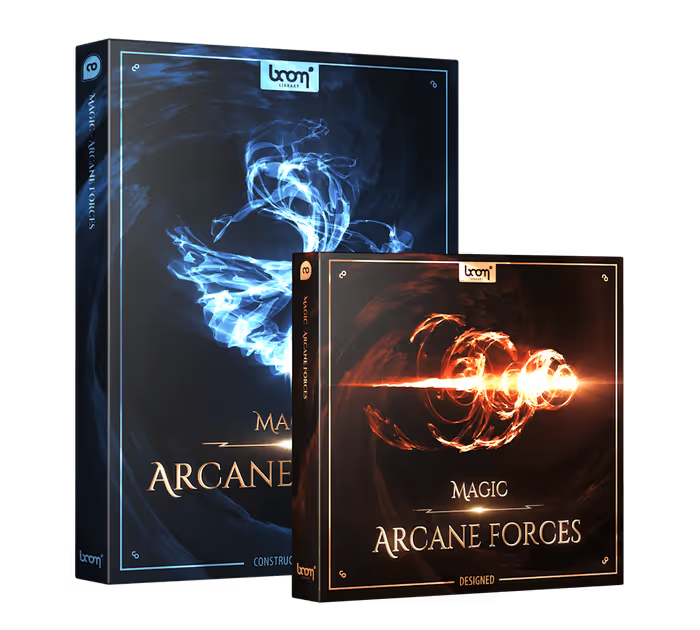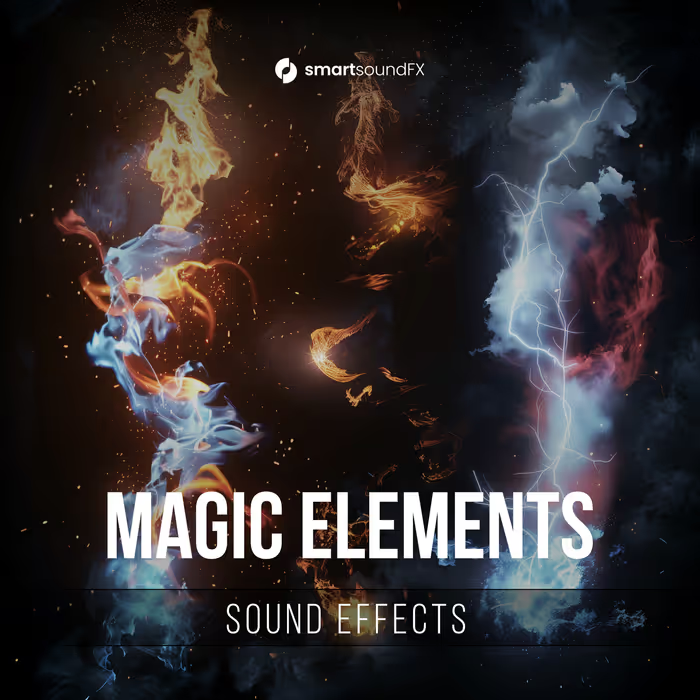Fans of Wes Anderson have come to expect films that embody his signature unconventional style of filmmaking and storytelling, dense, dead-pan dialogue, and distinct color palettes. When you’re watching an Anderson film, you know it. His style is so specific, but not stagnant. It’s evolved in subtle ways throughout his career.
In terms of sound, as supervising sound editor/re-recording mixer Christopher Scarabosio (at Skywalker Sound) points out, “…with each film, the sonic signature gets a little wider in scope and takes advantage of multi-channel audio.” For Asteroid City, Scarabosio and co-supervising sound editor/re-recording mixer Wayne Lemmer (both long-time collaborators with Anderson) made bold mix moves, panning dialogue hard left and hard right for split-screen scenes, panning dialogue to match camera movements in a way that feels natural and fluid, processing diegetic music to match camera angles, making subtle changes to winds and ambient sounds to make different spots in the same geographic area feel distinct, and finding just the right sounds for each scene to keep the track clean and precise.
Here, they talk about that process of creative elimination that allows them to build a succinct soundtrack, using that same approach to create moments of controlled chaos, designing the sounds of ’50s sci-fi tech (such as a ray gun, a galactic date indicator, etc.), voicing the roadrunner, using extreme panning on split-screen dialogue, having the dialogue follow the camera pans, and more!
Asteroid City – Official Trailer
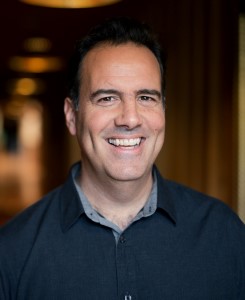
Asteroid City has fast-paced, jam-packed dialogue, and the sound in the film is just as succinct. Can you talk about your creative process of elimination to get the soundtrack to feel precise and to the point?
Wayne Lemmer (WL): As a workflow, we go through a lot of versions. I’ll send Wes a lot of versions to find out what’s working better for him. On Wes’s movies, he doesn’t like too much sound. It’s like recording a live album versus a studio album in that a studio album has lots of layers and overdubbed vocals or guitars to create a very lush sound. Wes is the opposite. He would rather it be more of a live feeling to keep that character. Sound for his films is about finding the right sound and placing it just right. And it always flows very musically with the dialogue. It’s always very rhythmic and very intentional.
Christopher Scarabosio (CS): It’s a three or four-piece band as opposed to a 90-piece orchestra.
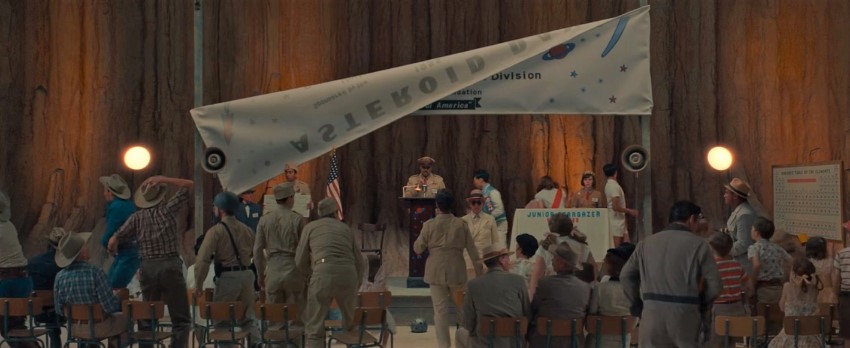
That’s not to say the whole film is minimalistic. There’s the scene near the end where General Gibson is giving his speech about the quarantine being lifted (and then subsequently canceled) which causes the audience to riot. There’s the ray gun, the jet pack, the crowd yelling, Augie’s car part going haywire again, Woodrow using his moon projector, etc. Can you talk about your approach to creating a feeling of orchestrated chaos for this scene?
WL: The picture dictated it. We were hitting those moments and it just naturally occurred. It just became very chaotic with the crowd screaming and everything unfolding. But also, when we do it, we make sure to feature what’s most important throughout that chaos.
…we make sure to feature what’s most important throughout that chaos.
CS: That’s a good way of putting it. There’s a lot of sound happening with the madness of what’s happening on set. And that can be a little overwhelming. So it’s about finding the best pieces of chaos from production audio and blending it with what Wayne has prepared — finding the right moments to feature the right things. All of Wes’s films are story-based and at any given moment of the story, we’re making sure that the audience is able to follow along as best as possible.

There are moments for some truly unique sound design for the Junior Stargazer’s inventions: the jetpack, raygun (particle disintegration), botanical accelerator, astronomical imaging, and S’morestozium (which didn’t have a sound but it’s a cool name!) They have a ’50s-technology flare to them. What went into those sounds?
WL: That’s the key to making it fit for the 1950s, trying to find things that were appropriate. I didn’t have a magical method to make them, other than just trying a bunch of different things out and seeing what stuck. But I think it was more about picking just a few sounds — picking the right ones — and trying very hard to make those capture that moment in time as a sound that maybe would’ve been heard back then.
I do have a few old vintage analog devices and I recorded their knobs and switches to use for this.
I recorded a lot of things in my house. I do a lot of my own little foley here and there, just to capture exactly what I’m looking for. I do have a few old vintage analog devices and I recorded their knobs and switches to use for this.
As far as other recordings for the film, I did go out to the desert to record some winds and insects, and ambient sounds.
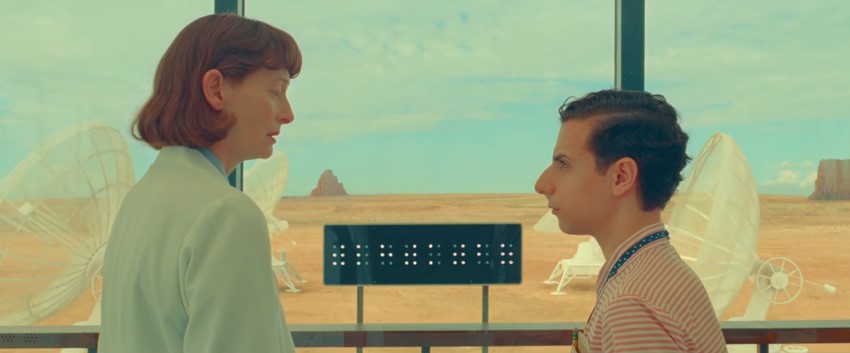
What about the ‘beeps and blips’ for the device that indicates a date on the galactic calendar?
WL: That took a while to nail down. We tried a lot of different versions; I watched a lot of old movies. I tried to mimic some of the old, cool blips and beeps that they used — like 2001: A Space Odyssey-types of sounds.
The melody changes over time because the date changes…
Then we just played with the melody of it until we found one that we liked. The melody changes over time because the date changes, so we definitely mixed it up a bit throughout the movie.
CS: That’s my favorite sound effect in the movie. I love how it evolves and the quality of it, the melodic nature of it. Everything. It’s fantastic.
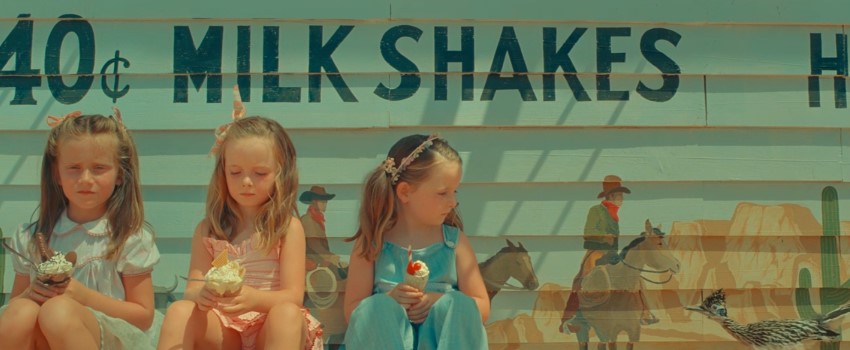
Who did the roadrunner meep-meep sound? (Also, I love that during the end credits, the roadrunner is dancing and you hear all of its foley in the sand. Nice touch!)
WL: I did it. It’s actually my voice, but I manipulated it to sound more roadrunner-y.
It’s actually my voice, but I manipulated it to sound more roadrunner-y.
For the dancing at the end, it took a while to cut this one. I was just getting to the very end and realized there’s the roadrunner throughout the end section. So, I cut all those footsteps and we kept them low in the mix, buried under the music, but you do hear them poke out here and there. At the very end, you hear him walking around and picking at the dirt.
CS: It’s a fun moment with the roadrunner making his grand return and grooving out to the music. It’s a dancing roadrunner, so you have to hear some footsteps; that just has to happen.
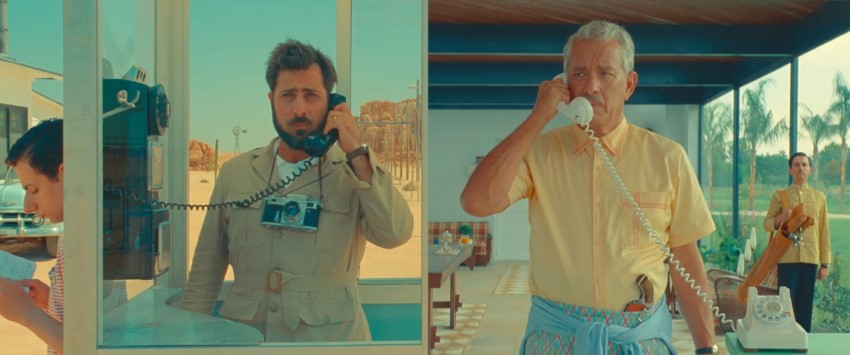
There was a great split-scene with Augie and Stanley on the phone. There’s a car chase and shoot out on Augie’s side and Stanley’s footsteps on the right side as he walks into the room to answer the phone (which sonically mirrors the gunshot cracks on Augie’s side). Can you talk about your mix for that scene?
CS: We had a conversation about mixing it hard left and hard right. My first instinct was to pan the dialogue more toward the center – it didn’t need to be hard left and hard right because that is not what is happening on screen. But Wes likes to try concepts that are bold and extreme from time to time. After trying a couple of variations, we decided to have everything for Auggie in the left channel and everything for Stanley in the right channel and it’s great, I love it.
It’s just one of those things where you go all in and it works in that respect.
They were playing Asteroid City at Skywalker’s Stag Theater (as an Academy screening) and I wanted to give that scene a quick listen as The Stag is a wide theater. And it was like, whoa. It’s just one of those things where you go all in and it works in that respect. It’s not necessarily technically accurate but it’s definitely something you remember and leaves an imprint. I think there’s something to be said for that.
WL: Wes has such great ideas. He is not afraid to push the natural conventions of mixing, or filmmaking, in general. He definitely doesn’t abide by anybody’s rules and it’s awesome.
…as the cars go by, I did pan them close to center although they never go across to the right.
As far as the effects, it is left and right, but as the cars go by, I did pan them close to center although they never go across to the right. So, Augie’s side is mostly left with a little bit of panning to the center but it never crosses that line. Visually, we had that definitive line dividing the shots.
With the gunshots, we were (again) trying to keep it in that ’50s style, and not have huge ‘Hollywood’ kinds of sounds. And that worked out great with Stanley’s footsteps coming in.

What was the most challenging scene in terms of sound editorial? Or the mix?
CS: When we get to Asteroid City, there’s the introduction of the characters
through the hotel area. The camera pans along all of the guests showing up and making their presence known, checking in, and doing any number of things. The camera is moving across the screen and each story dovetails into the next. It’s somewhat chaotic so you can’t lose the thread of each story that’s being told for each of the families arriving in Asteroid City. Having this sound natural and move in a way that felt organic was pretty challenging. Panning the dialogue to match the camera movement from one story to the next can feel a little gimmicky but there are ways of cheating it to make it feel more natural. Where we ended up felt very real, like you’re there with them. I love the way the sound is moving very naturally with what’s happening on screen.
…we would pan the music and slightly change the processing (EQ and reverb) we did on the music to give it a different feel.
WL: Adding to that, the diegetic music is also shifting. There are two different locations with diegetic music: the jukebox in the coffee shop and the radio in the motel check-in area. Every time the camera would pan, we would pan the music and slightly change the processing (EQ and reverb) we did on the music to give it a different feel.
Sound effects-wise, in the very beginning shot of Asteroid City as we’re panning around the different locations — the gas station, the guy putting up the letters on the sign, and so on — I did pretty subtle cuts of different winds and insects, the signs squeaking, and other small sonic details. That took a long time to get right. So, as you move along that town, everything would shift sonically.
CS: That was another scene I watched prior to the Academy screening at Skywalker and it really plays well in a big theater. You really get that sense of shifting environments and moving around this place the audience is being introduced to. It’s in the desert. It’s very stark, but it just feels very natural and right.
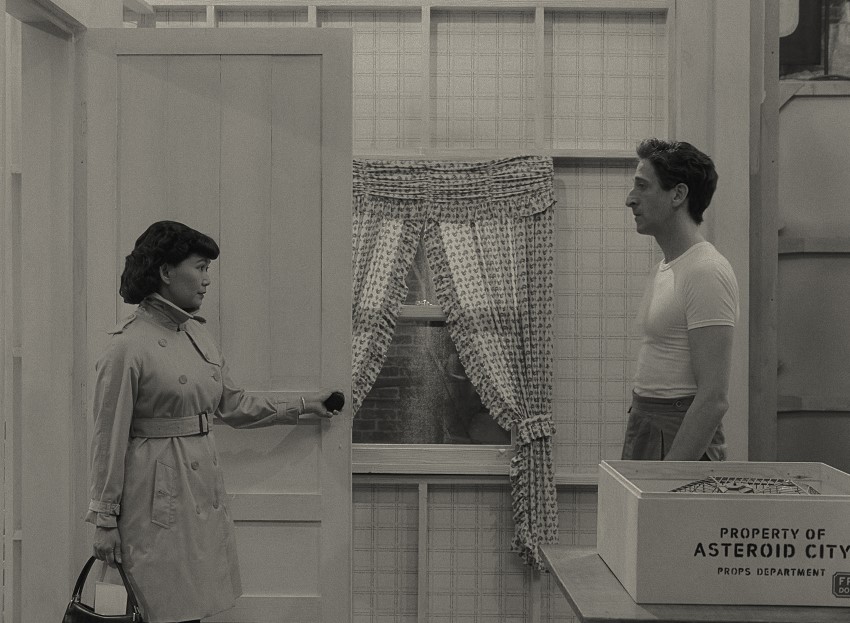
Now that it’s been nearly a year since you’ve worked on the film, what’s stuck with you the most about this experience?
CS: It feels like with each film we do with Wes there’s a sonic signature. And with each film, the sonic signature gets a little wider in scope and takes advantage of multi-channel audio. For instance, there’s a lot of panning dialogue and being very intentional and specific about where things are happening on screen. The music is coming out of different speakers and filling up the whole space as opposed to just being upfront. These are not big bombastic films for sound, but there’s a progression that we’re finding in working with Wes. Even though Asteroid City is not in-your-face, we’re expanding the form. And like all his films the directing, the acting, and the visual style are so unique and specific to his vision. That’s something I took away from the experience.
…there’s a lot of panning dialogue and being very intentional and specific about where things are happening on screen.
WL: We are definitely expanding on those kinds of things that Chris pointed out. With the black-and-white sections, for the most part, we didn’t use surrounds. We tried to keep those scenes separate. It’s mostly L-C-R for the black-and-white scenes, just to keep that different. Then when we’re in Asteroid City, we definitely use the surrounds. This film is the biggest one where we’ve done a ton of panning, and tried to experiment with a lot of different versions of sounds, to get the right sounds and delicate balance between the dialogue and music and effects and have them all play very rhythmically and succinctly.
A big thanks to Wayne Lemmer and Christopher Scarabosio for giving us a behind-the-scenes look at the sound of Asteroid City and to Jennifer Walden for the interview!


